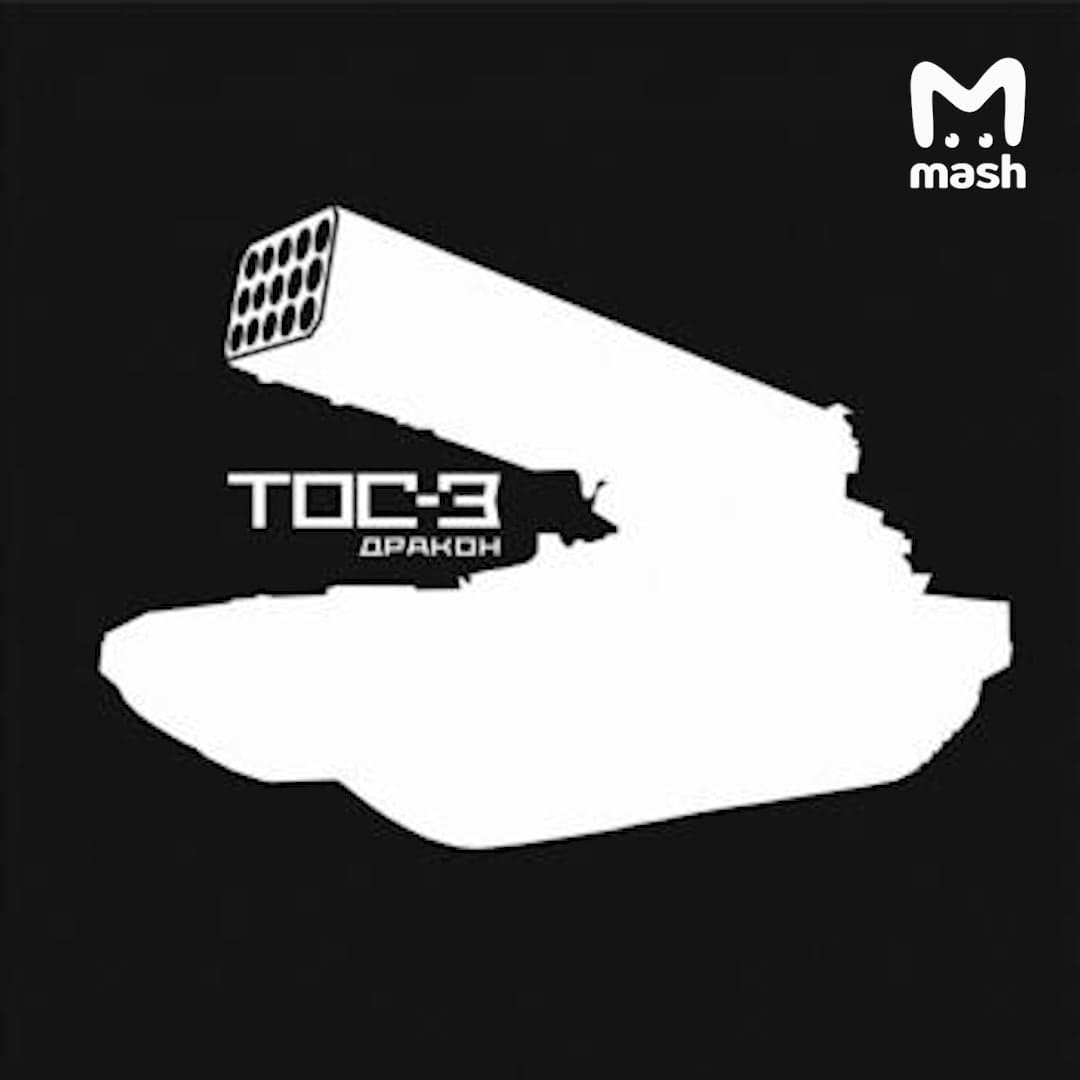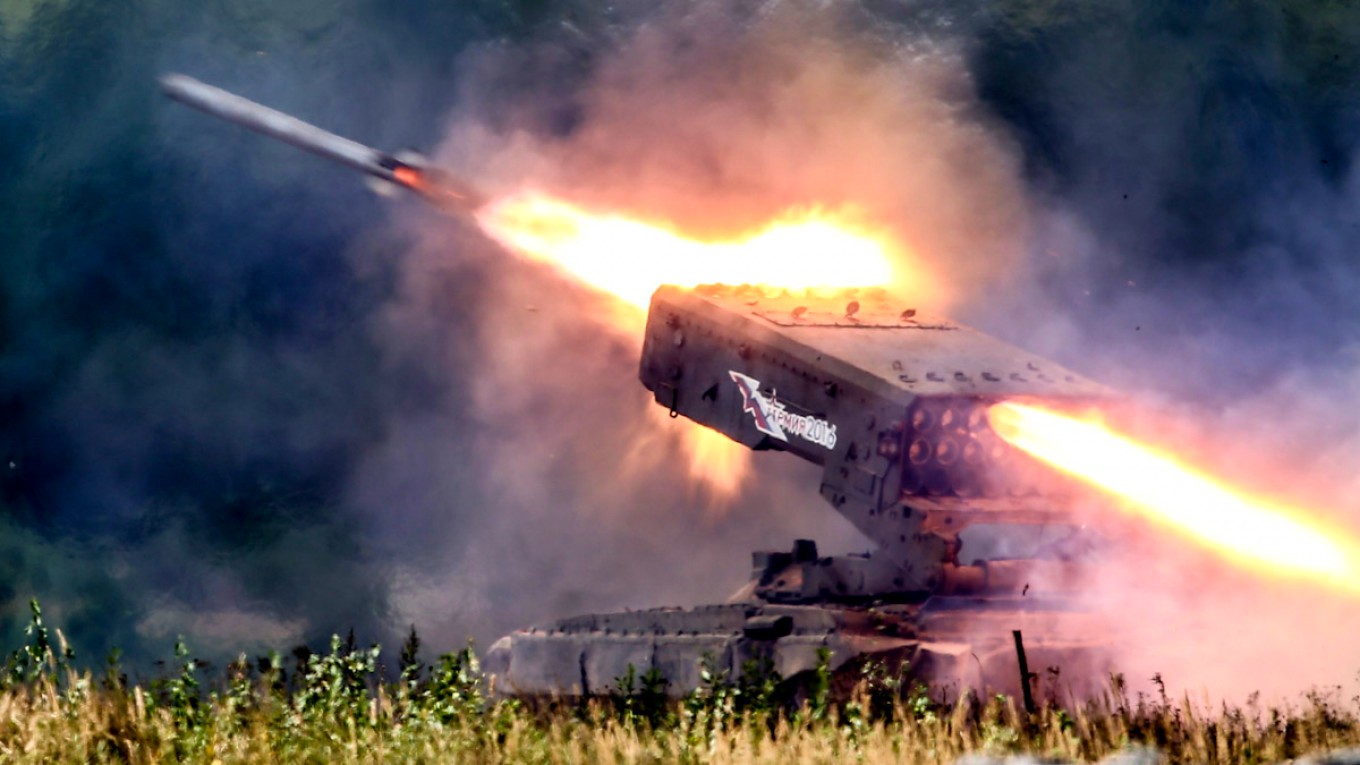The Russian ground forces will likely receive an advanced version of the TOS thermobaric warhead-firing multiple rocket launch system (MLRS) called the TOS-3 Dragon. The developer, Omsk Transport Engineering Plant (Omsktransmash), has registered a ‘trademark’ for the new name, title, and designation.
Meanwhile, Russia says Saudi Arabia could buy Russian TOS-1A heavy flamethrowers and other defense equipment. This was stated by Alexander Mikheyev, CEO of Rosoboronexport, on the sidelines of the World Defense Show 2024 in Riyadh.
This makes it the third version of the famous rocket artillery system after the TOS-2 was introduced earlier this year. The TOS-1A Solntsepek is an unusual type of MLRS whose unguided rockets carry thermobaric incendiary warheads. These explode with a massive blast and a large ‘shockwave,’ causing mass material and personnel casualties.
The TOS-1A has been used extensively in Ukraine and frequently featured in Russian Ministry of Defense (RuMoD) publicity material. A thermobaric warhead, or a vacuum bomb, has two explosive charges. One charge is almost entirely fuel, which mixes with the atmospheric oxygen to create an aerosol-like cloud.
The second charge detonates it and creates a massive blast wave. The high temperature and the destructive shockwave can destroy reinforced buildings. Russian reports and official military literature describe the weapon as a “heavy flamethrower system.”
New Name & Design Registered
TASS said it has accessed the Omsk Transport Engineering Plant’s (Omsktransmash) application to register the trademark TOS-3 ‘Dragon.’ “The document contains an image of a trademark containing the name TOS-3 Dragon. The applicant is Omsktransmash, which developed and produced heavy flamethrower systems (TOS).

The trademark registration document shows “a white silhouette of a heavy flamethrower system on a black background. The development of a new modification of TOS has not previously been reported.” The RuMoD in 2024 “demonstrated the operation of the latest TOS-2 Tosochka flamethrower in the Northern Military District.” Mash, a leading Russian outlet, published the image of the supposedly new TOS-3 Dragon variant.
The same military area administration that presumably oversees operations in northeastern Ukraine has used the TOS-1A Solntsepek since the beginning of the war “to burn out shelters, command and strong points, ammunition caches and artillery positions.”
The features and performance specifications of the TOS-3 Dragon and the TOS-2 Tosochka are not apparent. However, leading social media handles reporting and analyzing the war from the Russian perspective provide insight. According to ‘GeromanAT,’ “Judging by the schematic image, the engineers and designers took the best from the first and second versions of the flamethrower system.”
“The tracked chassis is from TOS-1A, and the modular loading is from TOS-2,” the handle said in a post. The TOS-1 ‘Buratino’ first version was released in the 1980s. Russian industry introduced the TOS-1A Solntsepek ten years later.
Difference In Variants
The striking visual difference between the 90s TOS-1 and the TOS-1A is the number of tubes holding the rockets in the box container, which is reduced from 30 to 24. The TOS-1A could carry only 24 missiles arranged in three rows of eight columns.

The illustrative concept image of the TOS-3 posted on various social media shows only 15 tubes (15 rocket capacity), which is a further reduction from the TOS-1A. However, it could be possible that this is not the actual configuration and is merely an artist’s general rendition. Future reports on the TOS-3 Dragon will hopefully reveal more details on its features and capabilities.
“TOS-2 was born in 2020 under the affectionate name ‘Tosochka.’ The flamethrower system was developed by NPO Splav and transferred from the chassis of the T-72 tank to the Kamaz base,” GeromanAT added. The TOS-1A Solntsepek’s (also called ‘Solntsepyok’) operation is unusual, firing two rockets per salvo.
Almost all photos and videos of a single unit or a battery of four to five MLRSs show it simultaneously releasing a pair of rockets. A tactical reason could be to bring about the maximum damage possible since the nature of the MLRS and its warhead demonstrates it is meant to have an ‘area effect’ and not precision strike on specific targets like the High Mobility Artillery Rocket System (HIMARS). In other words, the TOS MLRS ‘flamethrowers’ are used when accuracy is not a priority.
Close-Range Operation
The latest report on the TOS-1A Solntsepyok on February 8 said it “destroyed long-term shelters of the Armed Forces Ukraine (AFU) in the direction of Kupyansk.” According to Izvestia, these included “dugouts, observation posts, ammunition depots and provisions” of the AFU.
As explained above, the weapon is particularly sought for the ‘shockwave’ created after the blast. A crewmember with the call sign ‘Ural’ described the MLRS’s utility. “This vehicle has proven itself throughout the Northern Military District as a very effective and powerful weapon. The enemy is terrified of her,” Ural said.
The thermobaric shells are “not so important,” but it is the shockwave’s “high temperature and pressure” that “destroys dugouts or shelters.” The TOS-1A can cover an area of 200 square meters.
All videos of the TOS-1A in exercises or demonstrations show the rockets falling within a visual distance of under 1,000 meters, suggesting it is a very short-range system. This is unlike other MLRSs like the Uragan, Smerch, HIMARS, or Tornado. Their projectiles disappear over the horizon, meaning they are long-range systems used for standoff strikes in non-line-of-sight distances that travel between ranges of 50 to 70 km.
Since the TOS operates in a line-of-sight within visual range (WVR) strike, it has to come in “proximity to the enemy.” TOS-1A crews, therefore, “often work under the cover of BMP-3s,” which accompany flamethrower systems. “Motorized infantry armed with electronic warfare equipment (EW) protect combat vehicles from drone attacks. They are also capable of providing fire support in direct clashes with the enemy,” the report said.
“The BMP-3 is now used in our unit for fire support, that is, for moving personnel to a firing position and leaving. The vehicle is very passable and maneuverable and has fairly good speed. We have anti-drone guns. Constant observation of the sky is the most important thing,” said the commander of a flamethrower platoon with the call sign Rescuer.
- The author can be reached at satamp@gmail.com
- Follow EurAsian Times on Google News




